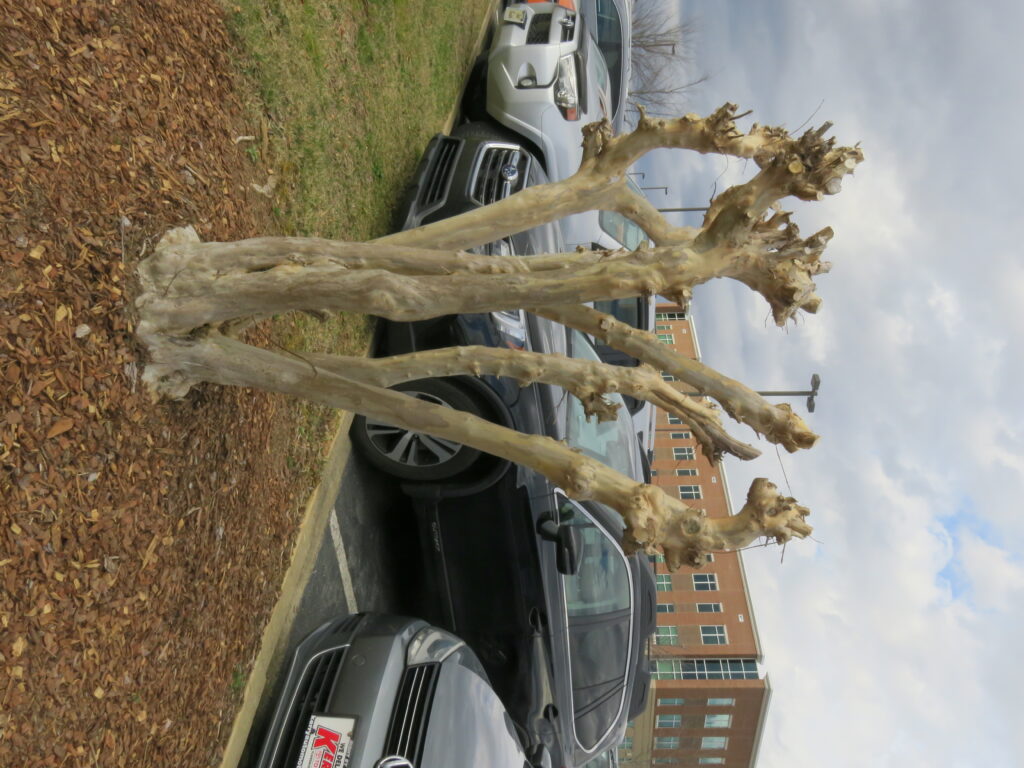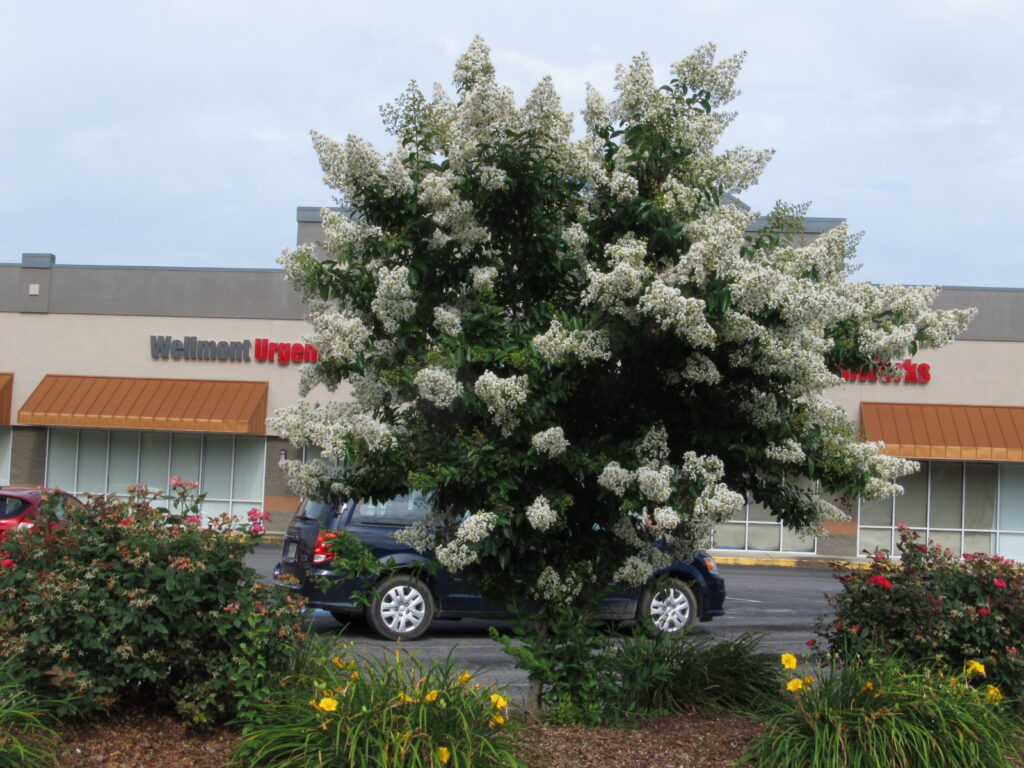Crape myrtles (Lagerstroemia x indica) are small flowering trees and shrubs. Indigenous to Asia, they have naturalized in our U.S. Deep South. Winter hardiness is a key concern (USDA Hardiness Zones 6-9).
Back in the 1970’s thru the 1990’s, plant breeders at the U.S. National Arboretum released 35 winter hardy varieties, named after North American Indian tribes. They varied in sizes ranging from 5-foot shrubby rose-pink flowered ‘Pocomoke’ to 30-foot white flowered tree ‘Natchez’. The U.S. nursery industry followed suit with 100 more varieties that fit in most landscape designs.
One significant concern with growing crape myrtles is bad pruning, frequently referred to as “Crape Murder”. Don’t let this tragedy happen in your landscape. Before purchase, spend 5 minutes to measure out the space where you will be planting a new crape myrtle. Next, go buy a hardy variety at a garden center in the plant zone. Don’t buy from big box stores unless you are certain the variety is winter hardy!

According to the plant experts at Mississippi State University, here’s the correct way to prune a crape myrtle:
You need sharp pruning tools based on the diameter of the branches and limbs. Use bypass pruners to easily cut back branches up to 3/4 inch in diameter. For branches up to 1 3/4 inches in diameter, use a robust set of loppers. Use a pruning saw on larger branches.
Nicely pruned crape myrtles should be multi-trunked and well-structured. Maintain an odd number of trunks, such as three or five, looks great and preserves enough space for the tree to produce strong growth.

Remove any unwanted trunks. Cut them as close to the ground as you can. Next, choose the height where you want the branching to start and remove lower branches back to the main trunk.
Remove any branches that are growing into the center of the tree canopy and any crossing or rubbing limbs against each other. This creates space and opens the canopy, reducing the chance of diseases. Cut off seed heads to encourage more growth in the spring.
Finish with the removal of small, thin branches. Use your index finger as a size guide to determine which ones to remove. It is common for crape myrtles of any age or size to have suckers sprout up around the base. Use your hand pruners and cut these off without leaving a stub.

 Posted in
Posted in 
